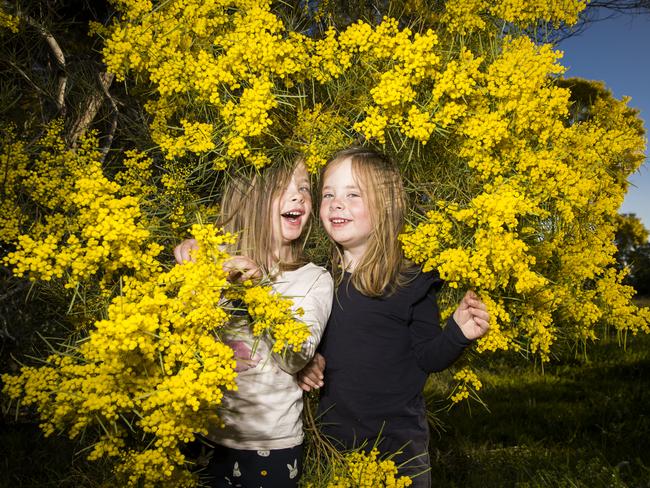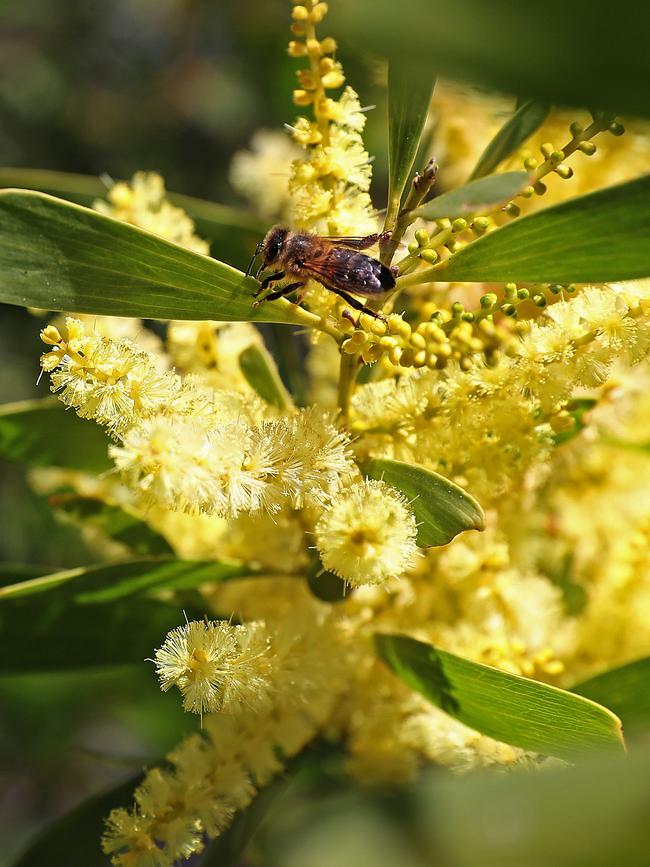Talking Point: Light up gold or yellow for Wattle Day
Governor’s wife Jane Franklin fell in love with the wattle flower and did something about it, writes ALISON ALEXANDER

Opinion
Don't miss out on the headlines from Opinion. Followed categories will be added to My News.
In the early days of the colony of Van Diemen’s Land, no one wrote any praise of the wattle blossom, though surely some must have admired it.
However, after Jane Franklin arrived in 1837 as the wife of the governor, she fell in love with the wattle flower and, in her energetic way, did something about it.
She or her husband came up with the idea of a regatta as a public holiday, to be held in December 1838. Jane decided the regatta should have a national emblem, a surprising use of the word “national” about the small colony. The emblem would be a sprig of silver wattle blossom tied with the British colour of navy blue. Jane wrote the wattle “abounds in the neighbourhood of Hobarton; the ground is covered with it and its tufts of yellow flowers which at the season of our anniversary are in their richest bloom, give it so lovely and attractive an appearance that we found it impossible not to choose it for the Colonial emblem”.
The idea took off, though owing to the time of year the black wattle was used rather than the silver wattle. The pavilion and booths at the Regatta were decorated with all sorts of flowers and greenery, but wattle predominated. The idea of a national emblem was a rallying point for all Vandemonians, wrote a newspaper. A sprig of wattle blossom and the oak leaf of England tied with a bow of British blue was very popular.

Some people even put up poems about wattle, such as:
I’m of colonial growth,
I boast no ancient fame;
You smile — but by my troth,
I’ll make myself a name.
Or, over a beer booth:
For those who do not like the wattle/ We’ve taken care to have a bottle.
This seems to be the first use in Australia of wattle as an emblem. Jane Franklin was so fond of it that she used its appreciation as a test of intelligence. “I am certain that a ready perception of the beauties & graces of the Wattle & of its singular adaptation to our colonial wants & wishes is a rare test of a sagacious as well as sensitive & practical mind.”
At the moment wattle is coming in to bloom all around Hobart, looking just as lovely and attractive as in Jane Franklin’s day. A drive up Huon Rd to Fern Tree, or up Waterworks Rd, gives a beautiful display, but this is a particularly good wattle season and the trees abound in many places.
Tasmanians are not the only ones to appreciate wattle blossom.
By Federation in 1901 it had become a symbol of the whole country. A Wattle Day League was started and September 1, 1910, was the first Wattle Day, with a function in Sydney which “greatly exceeded all expectations for success”.
In later years NSW celebrated Wattle Day on August 1, but in 1992, September 1 was proclaimed as a National Wattle Day for the whole country, with wattle seen as a unifying symbol that all Australians could relate to, irrespective of politics, religion, ethnicity or the area they live in.
In 1998 Jack Fahy of Canberra wondered why people weren’t celebrating the day.
He started the Wattle Day Association, and this year especially, to help lift the shadow caused by COVID-19 with something cheerful, the Association is encouraging people and institutions across the country to light their gardens and buildings in yellow and gold, to welcome Spring, and wish everyone, “Happy Wattle Day”.
The Association is funding the lighting of some Hobart landmarks from today until Sunday. They include the cardinals at Franklin Wharf, which was roughly the place where it all began in 1838, with Jane Franklin and her sprig of blossom. Spotlight sells blue ribbon, wattle blossom abounds, so how about following her example?
Hobart’s Alison Alexander is a historian and award-winning author of books including Duck and green peas! For Ever! Finding utopia in Tasmania.


